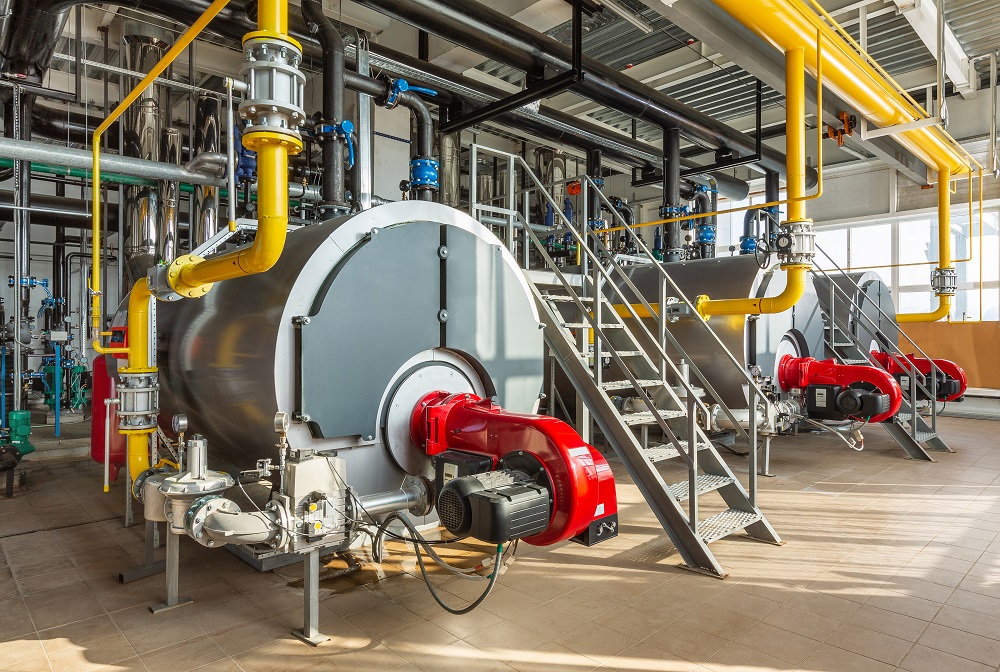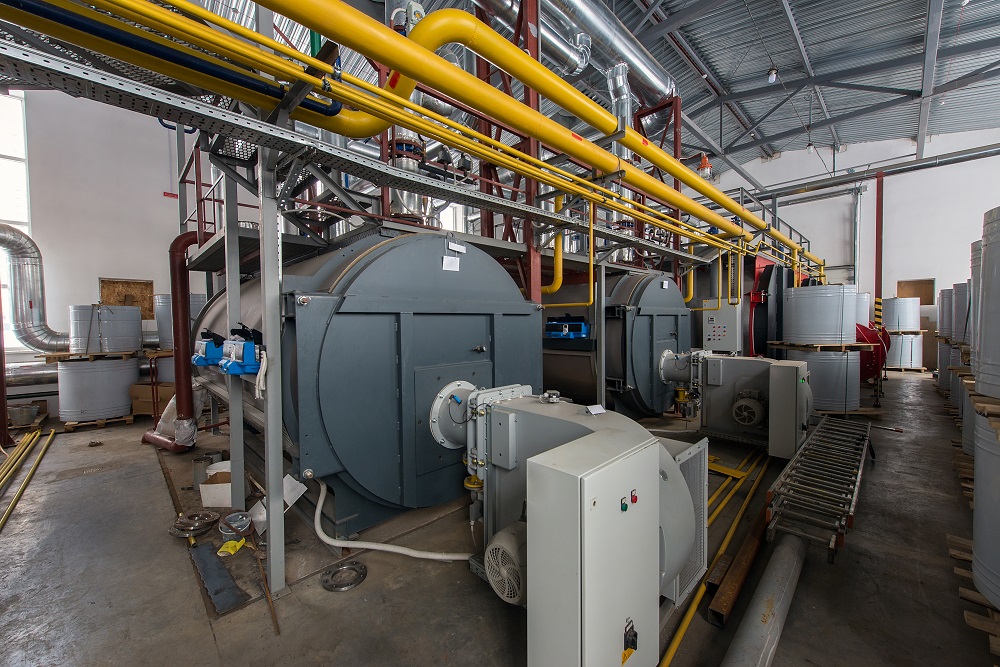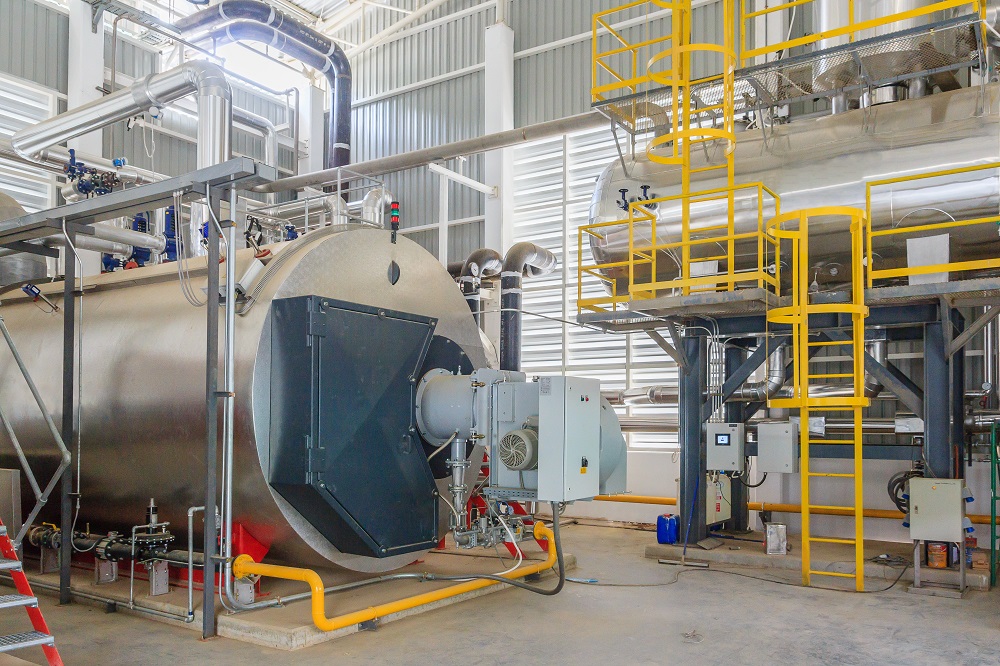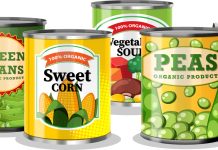 Steam generators are widely used in the food industry. The choice of the boiler needs to be well thought, focusing on consumption, efficiency and characteristics. Possible alternatives are solar thermal energy, cogeneration and trigeneration.
Steam generators are widely used in the food industry. The choice of the boiler needs to be well thought, focusing on consumption, efficiency and characteristics. Possible alternatives are solar thermal energy, cogeneration and trigeneration.
Many food processing companies use high-power steam generators with a production capacity below 20 t/h. A steam boiler should be chosen with great accuracy, taking into account specifications and consumption.
The systems can run at different operating pressures: low pressure up to 1 bar, medium pressure up to 15 bar, and high pressure over 15 bar. Generally, the food industry uses the average pressure. Modern industrial steam generators do not require continuous supervision by the plant operator for at least 72 hours, and can be equipped with systems for computerized control of all parameters.
Efficient generators
Steam generators are widely used in the food industry. A steam boiler should be chosen with great accuracy, focusing on consumption, efficiency and characteristics. The food processing industry mainly uses fire-tube steam boilers, characterized by a large volume of water. The most common configuration is the one with “three passes”, which allows a better seasonal efficiency and lower exhaust emissions, compatible also in those areas where NOx is less than 80 mg/Nm3 for combustion with methane. In fire-tube steam generators, fumes flow through a bundle of tubes immersed in the water contained in the generator.
By passing through the tube bundle, the heat of the fumes is transferred to the water, and the exhausted fumes are cooled. At the same time, the absorbed heat heats the water creating steam. The vessel under pressure must be manufactured in accordance with the Pressure Equipment Directive PED 97/23/EC. Three-ways smoke boilers are available in different versions: standard two-stage model, in which the boiler operates with two potentials and two burner flames, at 50% and at 100%; modulating models, where the boiler operates by power from a minimum of 30% to a maximum of 100% by means on an inverter, and progressive two-stage models, in which the boiler operates with two potentials and two flames, with the possibility, unlike the standard two-stage version, of falling below 50%.
Steam boilers operate at high temperatures, between 150 and 200°C; to avoid heat loss and for economic reasons, they must be bell insulated. The last generation steam generators also extend the insulation to smoke box, front doors and hydraulic connections, thanks to the ceramic fiber. In order to increase the efficiency of a plant and ensure good energy savings, it is possible to install special devices, such as recovery units or economizers, to recover part of the thermal energy that would otherwise be dispersed with combustion fumes. In particular, a heat recovery unit substantially is an air-to-fumes exchanger installed directly at the steam generator outlet, to raise the combustion air temperature of the burner.
The economizer, on the other hand, exploits the fumes heat to preheat the boiler feed water. The latter has reduced dimensions and can be installed in the boiler body, reducing the dimensions of the generator. Another way to increase performance consists in installing a capacitor after the economiser. The smoke condensation allows 100% exploitation of the residual heat of exhaust gas. This is a useful solution, especially when a lot of low-temperature water is used, or when the process system produces large amounts of waste steam, and regularly needs new water.
 Boiler water treatment
Boiler water treatment
In order to work at their best, heat generation stations must be supplied with water of excellent quality that has undergone chemical-physical treatments, according to the standards UNI EN 12953-10 (fire-tube steam boilers – Part 10: Requirements relating to the quality of feed-water and boiler water) and UNI EN 12952-12 (water-tube boilers and ancillary systems – Part 12: Requirements relating to the quality of the feed-water and the water in the boiler).
These chemical-physical treatments should reduce the risk of corrosion, precipitation of mud or formation of deposits that may affect the operation of the generator. Therefore a water purification treatment must be provided using a softener or a thermal degasser. Modern water treatments must not only ensure compliance with the chemical parameters required by manufacturers, but also with existing standards (FDA, ISO TS 22002 “Prerequisite programmes on food safety – Part 1: Food manufacturing”, sets the requirements for the manufacture of safe products and the supply of safe food for human consumption) using active ingredients that are not dangerous for operators, and optimising the volume of treated water, thus reducing and simplifying the interventions of the maintenance personnel.
Boiler water is treated with oxygen scavengers (volatile, non-volatile, passivating, for low-temperature water, etc.); conditioning products for steam and condensate lines (alkalising amines, film forming additives, non-amino alkalising agents); scale inhibitors; dispersants and conditioning products for boiler sludge; corrosion inhibitors and conditioners for boilers used for the production of hot water and superheated water; treatments with active principles GRAS – Generally Recognized As Safe or FDA 173.310 Boiler water additives, defining the list of additives allowed in boiler water used for the generation of steam to be used in contact with food.
Full automation
Steam generation is crucial for many food-processing companies, in different production phases, as: pasteurization, sterilization, cooking, etc. It is important that the steam production process is automated in order to constantly monitor all the plant steps, avoiding malfunctions that would damage the final product and slow down the production process. Thanks to an automatic control system, the plant is constantly monitored, even remotely. Any variation in values is immediately identified and recorded.
Thermal power stations in containers
The thermal power station in container is a solution that can produce thermal energy in a fast, simple, economical and mobile way. Available in versions with diathermic oil, steam and water, these thermal power plants are built in standard container modules and delivered complete with everything, and can be immediately activated after connecting the utilities. As fuels, they can use: methane gas, LPG, liquid methane gas, biogas, biogas mix, diesel oil, fuel oil, bitumen-based fuel, bituminous emulsions.
Some thermal power stations are complete with a treatment system for feed-water; feeding of condensate conditioner; automatic dosing of corrosion inhibitor that allows the operator to disable or stop the feeding of quick steam generators when not used even for a single day. For the generation of hot water by steam power stations, one or more heat exchangers are installed internally, even for systems operating at temperatures other than those of the power station. These are modern solutions, equipped with an electronic control system that provides real-time display and control of each function.
 Not only thermal power stations: Solar heat in aid of the food industry
Not only thermal power stations: Solar heat in aid of the food industry
For many typical processes in the food industry, the temperatures used are below 100°C. In these cases, the use of solar heat collectors can be of advantage. Examples thereof can be milk pasteurisation; or the production processes of cheese, where milk is heated at 40°C, the moulding and steaming are performed at 60°C, the pre-heating at 80°C, and also for the washing of surfaces, bottles, filters and equipment used for treating wines and so on. Whenever heat is required at continuous low or medium temperature. In these cases, solar heat can be used with conventional collectors available on the market, using flat glass or vacuum tube technology.
There are several ways to integrate a solar thermal system: pre-heating action (series connection with the existing system); production in parallel with the conventional generator and direct coupling with a sub-process. The cost of a solar thermal system varies according to a series of parameters, such as the size, the installation on the ground or on the roof, the need for civil works; the presence of an accumulation tank, etc. Operating costs are linked to the power consumption of circulation pumps and regulators, while maintenance costs vary between 1 and 2%.
Cogeneration and trigeneration
Steam, hot and cold water are energies much used in the food sector. The cogeneration allows to simultaneously produce electricity and heat with a single plant, using only one source of fossil or renewable fuel. Cogeneration involves the recovery and use of the heat produced by the combustion process, ensuring a more efficient use of the primary fuel source, resulting in energy savings. Higher savings could be achieved implementing various measures, as for instance by integrating a heat accumulator, heat generation can be isolated from the production of electricity, thus increasing the flexibility of a plant.
With an absorber, the heat produced by the cogenerator can be used, for example, for the ventilation of premises. A catalyst, on the other hand, removes the harmful substances present in small amounts in the exhaust gas. Unlike most power plants, cogeneration plants can adjust their yield in a very short time, adapting themselves to the energy needs of the firm.
Food-processing companies can also choose trigeneration plants, in which the simultaneous generation of electrical and thermal energy comes along with refrigeration, in form of air or cold water for air conditioning or industrial processes. The cogenerator is coupled with an absorption chiller that transforms thermal energy into refrigerating energy by changing the fluid state of the refrigerant.



